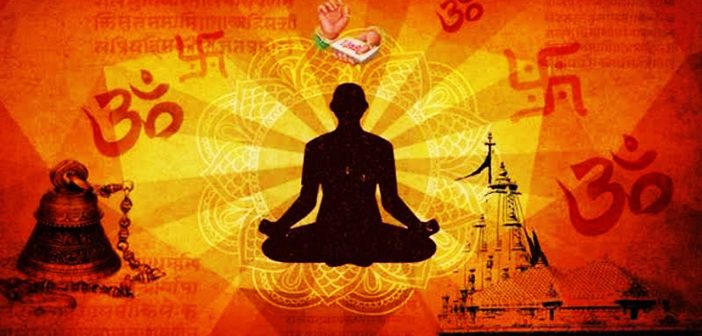In recent years, Sanatan Dharma, often synonymous with Hinduism, has seen an increasing global presence and growing awareness, reflecting both the depth of its ancient wisdom and the adaptability of its teachings to modern life. The term “Sanatan Dharma” translates to “eternal duty” or “eternal law,” and refers to a philosophy that transcends religious boundaries, offering spiritual and ethical guidelines on how to live harmoniously with oneself, others, and the environment. In the past five years, there has been a marked rise in the popularity of practices and philosophies rooted in Sanatan Dharma, from yoga and meditation to Ayurvedic wellness and mindfulness—indicating a shift towards holistic, spiritually aware lifestyles across various cultures.
Key Drivers of Rising Awareness
- Globalization of Yoga and Wellness Practices: Yoga, which originates from Hindu philosophy, has grown into a global wellness phenomenon. The United Nations has officially recognized June 21 as International Yoga Day, underscoring the global appeal and acceptance of these practices. Millions participate in yoga, often unaware of its roots in Sanatan Dharma. Similarly, Ayurvedic principles have permeated wellness sectors worldwide, with people increasingly adopting holistic approaches to health and well-being.
- Spiritual Gurus and Organizations: Influential spiritual leaders, such as Swami Vivekananda and, more recently, Sadhguru and Sri Sri Ravi Shankar, have expanded the global reach of Hindu philosophy. Organizations like the Art of Living Foundation and the Isha Foundation promote principles rooted in Sanatan Dharma, often framing them in universal terms that resonate globally. These movements present Hindu values of self-realization, peace, and interconnectedness, adapting them to appeal to broader audiences without losing their traditional significance.
- Digital Media and Diaspora Engagement: The Hindu diaspora has played a significant role in disseminating Hindu philosophies internationally, especially in countries like the United States, Canada, and the United Kingdom. Social media platforms have amplified this reach, with numerous groups sharing teachings, discussions, and information on Hindu rituals, festivals, and principles. The accessibility of digital resources has made learning about Sanatan Dharma more approachable, attracting interest from both the diaspora and individuals seeking spiritual alternatives to mainstream religious practices.
- Growing Interest in Sustainability and Ethics: As global environmental and ethical concerns rise, the teachings of Sanatan Dharma on environmental stewardship, vegetarianism, and interconnectedness have found resonance. Hinduism’s emphasis on “Ahimsa” (non-violence) and respect for all forms of life aligns with current sustainable and ethical values. This alignment has drawn individuals toward Hindu principles as they look for spiritual guidance in addressing ecological crises and living more conscientiously.
- Cultural Appreciation and Integration: Hindu festivals, particularly Diwali and Holi, are celebrated worldwide, often in multicultural, inclusive formats. These celebrations have introduced many to Hindu culture and values. Furthermore, Bollywood and Indian music have helped popularize Hindu iconography and mythology globally. Increased academic interest in Hindu scriptures and Vedic literature has also fostered a deeper understanding of Sanatan Dharma beyond stereotypes.
Regional Perspectives
In the West, Sanatan Dharma is primarily perceived through the lenses of yoga, meditation, and self-care, often devoid of religious connotations but retaining core Hindu values. Meanwhile, in South and Southeast Asia, there is a resurgence of cultural pride among Hindu communities, particularly in India, where Hindu identity has gained political and social prominence. This resurgence has fueled discussions on Hindu heritage and encouraged more Indians to reconnect with traditional practices, rituals, and values.
In Southeast Asia, where historical Hindu kingdoms once thrived, countries like Indonesia and Thailand maintain cultural connections to Hinduism, incorporating aspects of it into their religious practices and everyday life. Notably, in Indonesia’s Bali, Hinduism remains the dominant religion, practiced uniquely alongside local traditions.
Future Outlook
As the interest in Hindu philosophy and lifestyle choices continues to grow, Sanatan Dharma is likely to become more integrated into global consciousness, particularly through practices like yoga and Ayurveda. This trend suggests that Hinduism may increasingly be viewed not only as a religion but as a comprehensive way of life offering practical guidance for personal and communal well-being. Furthermore, with environmental and ethical concerns continuing to shape global priorities, principles like Ahimsa, karma, and dharma may gain even more relevance.
In conclusion, the rising awareness of Sanatan Dharma reflects both a curiosity and a respect for one of the world’s oldest spiritual frameworks. As people around the world seek meaning and balance in a fast-paced, interconnected world, Sanatan Dharma offers teachings that align with universal values, positioning it as a timeless path for those seeking spiritual growth and a compassionate, balanced lifestyle. This awareness is expected to deepen, marking a shift towards inclusivity and cultural appreciation for Hinduism’s contributions to global wisdom and ethics.





